Discover 11 hidden attractions, cool sights, and unusual things to do in Kettering (United Kingdom). Don't miss out on these must-see attractions: Wicksteed Park, Rushton Triangular Lodge, and St Mary the Virgin. Also, be sure to include St. Mary the Virgin Church in your itinerary.
Below, you can find the list of the most amazing places you should visit in Kettering (England).
Table of Contents
Wicksteed Park

Amusement park in Kettering, England. Wicksteed Park is a Grade II listed park in Kettering, Northamptonshire, England, which includes an amusement park within its grounds. The park is located in the south-east of Kettering, on the western edge of Barton Seagrave village. The park is owned by the Wicksteed Charitable Trust, with the amusement park being run by its trading subsidiary company Wicksteed Park Ltd.[1]
Address: Barton Road, NN15 6NJ, Kettering
Rushton Triangular Lodge

Folly in Rushton, Northamptonshire, England. The Triangular Lodge is a folly, designed by Sir Thomas Tresham and constructed between 1593 and 1597 near Rushton, Northamptonshire, England. It is now in the care of English Heritage. The stone used for the construction was alternating bands of dark and light limestone.
The lodge is Grade I listed on the National Heritage List for England. Tresham was a Roman Catholic and was imprisoned for a total of fifteen years in the late 16th century for refusing to become a Protestant. On his release in 1593, he designed the Lodge as a protestation of his faith. His belief in the Holy Trinity is represented everywhere in the Lodge by the number three: it has three walls 33 feet long, each with three triangular windows and surmounted by three gargoyles. One wall is inscribed '15', another '93', and the last 'TT'. The building has three floors, upon a basement, and a triangular chimney. Three Latin texts, each 33 letters long, run around the building on each facade. The quotations are:
The windows on each floor are of different designs, all equally ornate. The largest, those on the first floor, are in the form of a trefoil, which was the emblem of the Tresham family. The basement windows are small trefoils with a triangular pane at their centre. The windows on the ground floor are of a lozenge design, each having 12 small circular openings surrounding a central cruciform slit. Heraldic shields of various families surround these windows.
The slightly raised ground floor has an entrance in the south-east facade. Over the door, beneath Tresham's coat of arms, is the Latin inscription: Tres testimonium dant, meaning "The number three bears witness" or "Tresham bears witness" (Tres was the pet name his wife used for Tresham in her letters). Also above the door are the numbers "5555". The figures are oddly shaped, and architectural historian Nikolaus Pevsner speculated that this may once have read "3333", but that number seems to have no particular significance. It has, however, been pointed out that if 1593 is subtracted from 5555, it leaves 3962 (the date, BC, of the Flood, according to Bede).
The principal room on each floor is hexagonal, thus leaving the three corner spaces triangular; one of these spaces contains a spiral staircase, the remaining two are small rooms.
The building is crowned, above the quotations on each facade, by three steep gables each surmounted by a three-sided obelisk at the apex. Among the emblems carved on the gables are, on the southeast side, the highly symbolic seven-branched candelabrum within an octagonal plaque, and a heptagonal plaque depicting the seven eyes of God. On the north side are a Pelican in her piety, a symbol of Christ and the Eucharist, and a Hen and Chickens; on the southwest gable are a Dove and Serpent; and the Hand of God touching a globe. The triangular chimney is adorned with the holy monogram "IHS", a lamb and cross, and a chalice.
While the lodge is indisputably a testament to Tresham's faith, it is also an example of the Elizabethan love of allegory. Carved in the gables are the numbers "3509" and "3898": these are said to be the dates (BC) of the Creation and the Calling of Abraham. Among the more recent dates carved on the building are 1580, thought to be the date of Tresham's conversion, and also the future (at the time of their carving) dates 1626 and 1641 - to what do they refer? One suggestion is that not only are they divisible by three, but that, when 1593 is subtracted from them, they give 33 and 48, the years in which Jesus and the Virgin Mary are said to have died.
The broken inscriptions inscribed on each gable combine to read "Respicite non mihi laboravi", which means "Behold I have not laboured for myself alone".
The Lodge was the only building Tresham designed which he saw completed before his death in 1605. Nikolaus Pevsner in his The Buildings of England: Northamptonshire states: "as a testament of faith this building must be viewed with respect". He also considered the lodge so architecturally important that he chose its photograph for the front cover of the first edition (1961) of his book; it also features on the cover of the current edition
The Lodge figures prominently in the chapter of Alan Moore's novel Voice of the Fire concerning Tresham's son Francis, a Gunpowder Plot conspirator. Moore, a Northampton native, touches on the history of several local sites in his speculative magical realist history of the town. It is also featured on the cover of the album Sun Structures released in February 2014 by the English psychedelic band Temples, and is visible from the Midland Main Line between Kettering & Market Harborough[2]
St Mary the Virgin
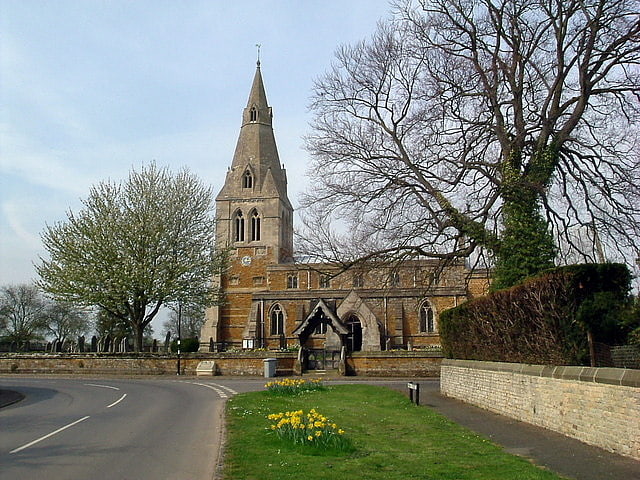
The Church of St Mary the Virgin is a church in Ashley, Northamptonshire.[3]
Address: Hall Lane, Kettering
St. Mary the Virgin Church

Church in Brampton Ash, England. St. Mary the Virgin is the local Church of England parish church for Brampton Ash, Northamptonshire. Sitting in the Diocese of Peterborough, the ironstone church boasts fine carvings of lions.
It is well lit at night, and can be seen across the Welland Valley for miles around.
The church is largely 13th and 14th century with some restoration in the 19th century.[4]
Boughton House
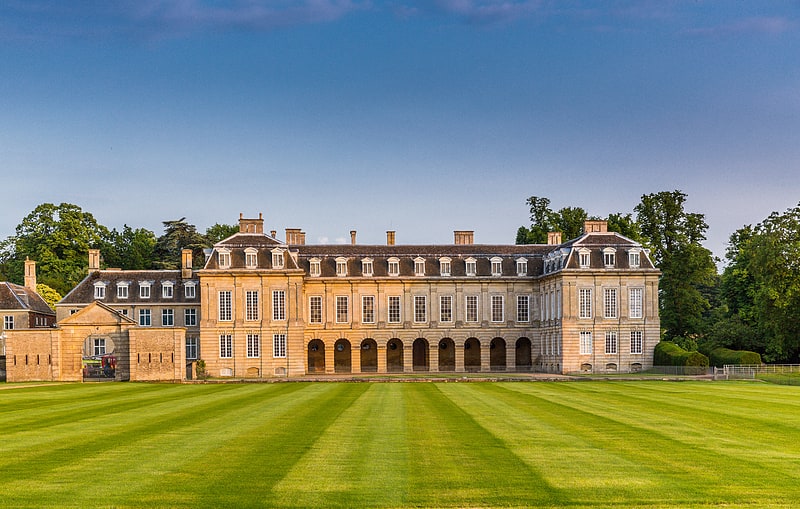
Country house in England. Boughton House is a country house about 3 miles north-east of Kettering off the A4300 road near Geddington in Northamptonshire, England. Part of an estate of 11,000 acres, it is one of the seats of the Duke of Buccleuch, and famed for its beauty, its collections, and the fact it has survived virtually unchanged since the 17th century. While possessing a medieval core, its exterior evokes an opulent French chateau, causing it to be termed The English Versailles.
The magnificence of the collections at Boughton is explained by the ducal family surname Montagu-Douglas-Scott, which reflects the union of three great families and their estates through marriage: Montagu, the Dukes of Montagu; Douglas, the Dukes of Queensberry; and Scott, the Dukes of Buccleuch.
Boughton contains a comprehensive collection of furniture, tapestries, porcelain and carpets. The art collection includes many notable paintings such as The Adoration of the Shepherds by El Greco, Thomas Gainsborough’s portrait of Mary Montagu, and a celebrated series of grisailles by Van Dyck, and Breaking Cover by John Wootton.
Once a servants' hall, located next to the kitchen, the armoury is now home to what many experts regard as one of the finest privately held armouries in the country. It is an historic collection that owes much to John, 2nd Duke of Montagu (1690–1749).
Boughton House is a venue for events, weddings, corporate activities and organised groups. The House also opens on specific dates for guided tours.[5]
Address: Boughton House Boughton Park, NN14 1BJ Kettering
Cransley Hall
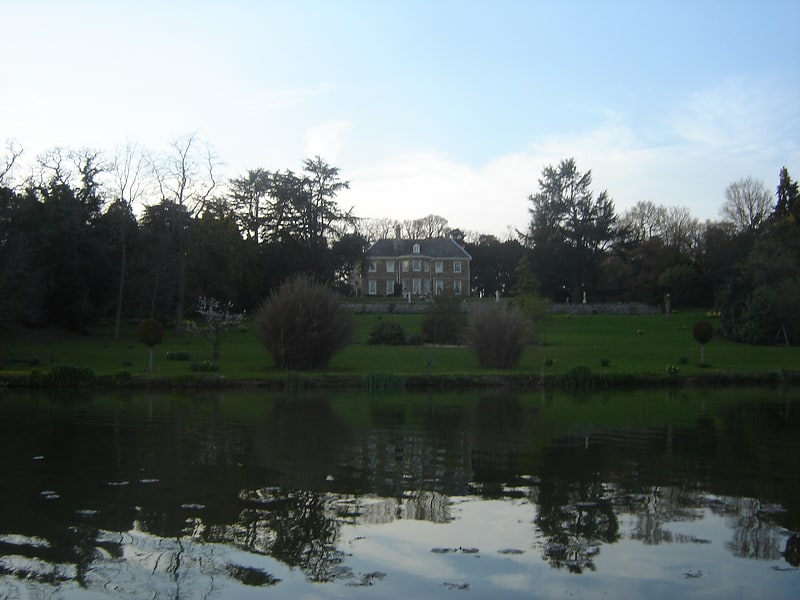
Village hall in Cransley, England. Cransley Hall is a Grade II* listed country manor house in the village of Great Cransley, near Kettering in Northamptonshire. It is set in its own grounds which include a lake created by monks in the fifteenth century. Originally built in around 1580, the Hall has over fifteen bedrooms and ornately decorated reception rooms, including Italianate plasterwork in the dining room.
The Hall was originally built by Dame Alice Owen, widowed three times, latterly to Judge Thomas Owen. Following his death she left her home in Islington, London, and moved to Cransley Hall. Owen also founded Dame Alice Owen's School.
The Hall bears the arms of later owners, Sir Thomas Cecil (c.1595) and Sir Henry Robinson (d. 1727).
It passed to the Rose family in 1791, remaining in their hands till 1904.[6]
Address: Church Ln, NN14 1FX Kettering
The Plens
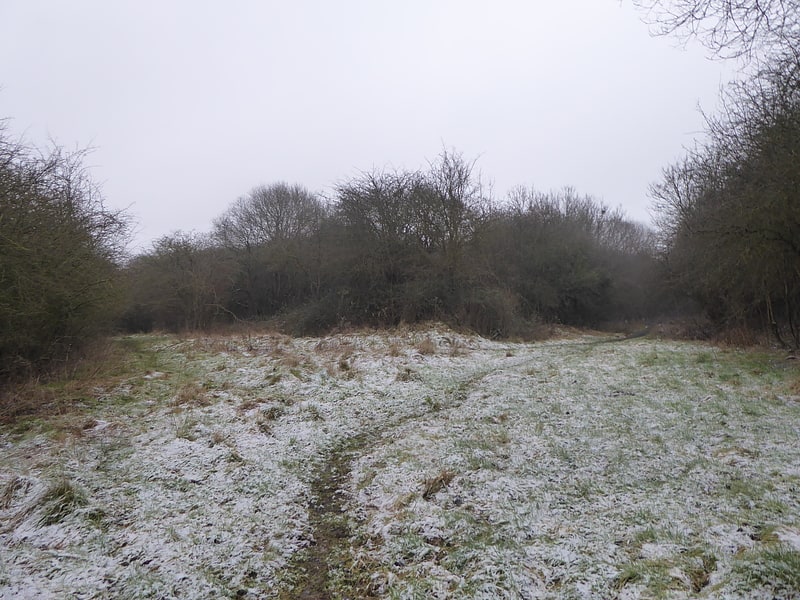
Nature reserve in Desborough, England. The Plens is a 5 hectare nature reserve in Desborough in Northamptonshire. It is managed by the Wildlife Trust for Bedfordshire, Cambridgeshire and Northamptonshire.
Former use as a quarry and a railway line have created steep slopes and varied habitats, with grassland, hawthorn scrub, woodland and herbs. Flowers include wild basil, bladder campion, moschatel and bird's-foot-trefoil. There is a diverse range of invertebrates, particularly butterflies.
There is access from Ironwood Avenue.[7]
Address: Pipewell Road, Desborough, Kettering
Wicksteed Park Nature Reserve
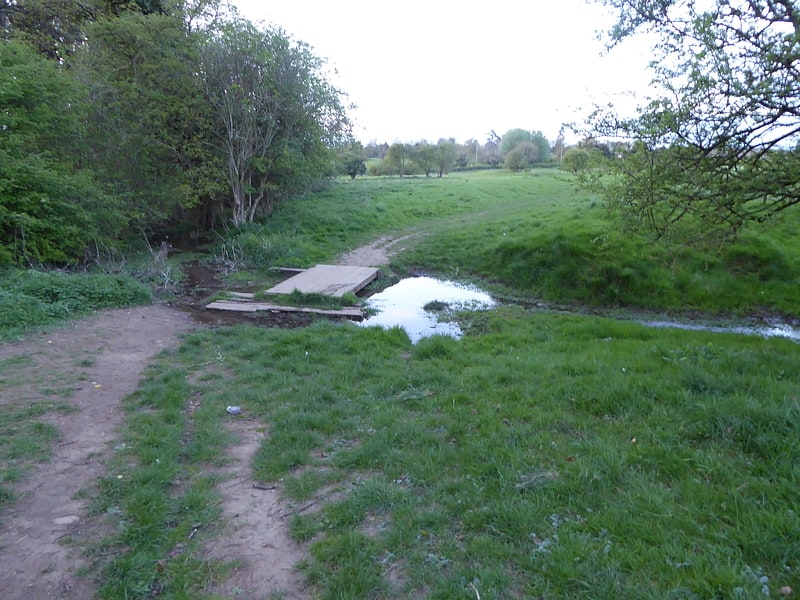
Nature reserve. Wicksteed Park is a 14.2 hectare nature reserve in Barton Seagrave, on the eastern outskirts of Kettering in Northamptonshire. It is managed by the Wildlife Trust for Bedfordshire, Cambridgeshire and Northamptonshire.
This site is in two areas, Wicksteed Water Meadows and Castle Field. Water meadows are flooded by people for agricultural purposes, unlike flood meadows which are under water when river levels are high. Flora include great burnet and marsh marigold, and there are also grass snakes.
There is public access to Castle Field on the south side of Barton Road but not the water meadows on the north side.[8]
Eden Centre

Church
Address: 21 Montagu Street, Kettering
Barton Seagrave

Village in England. Barton Seagrave is a large village and civil parish in the North Northamptonshire, England. The village is effectively a suburb of Kettering, about 1.5 miles south-east of the town centre. The older part of the village is known for its Norman Church and attractive buildings.
The villages name means 'barley farm'. 'Seagrave' was added after the manor passed to Stephen de Segrave in 1220.[9]
Kettering Skatepark

Game and entertainment center, Relax in park, Park
Address: Grantown Close, Kettering